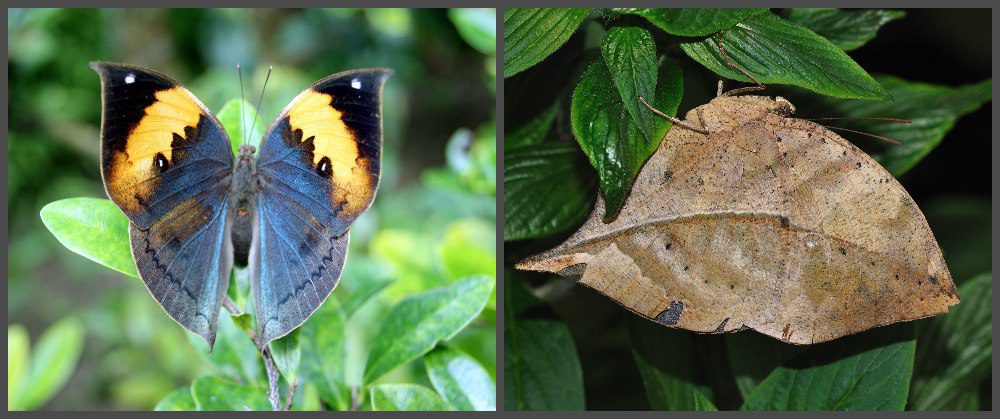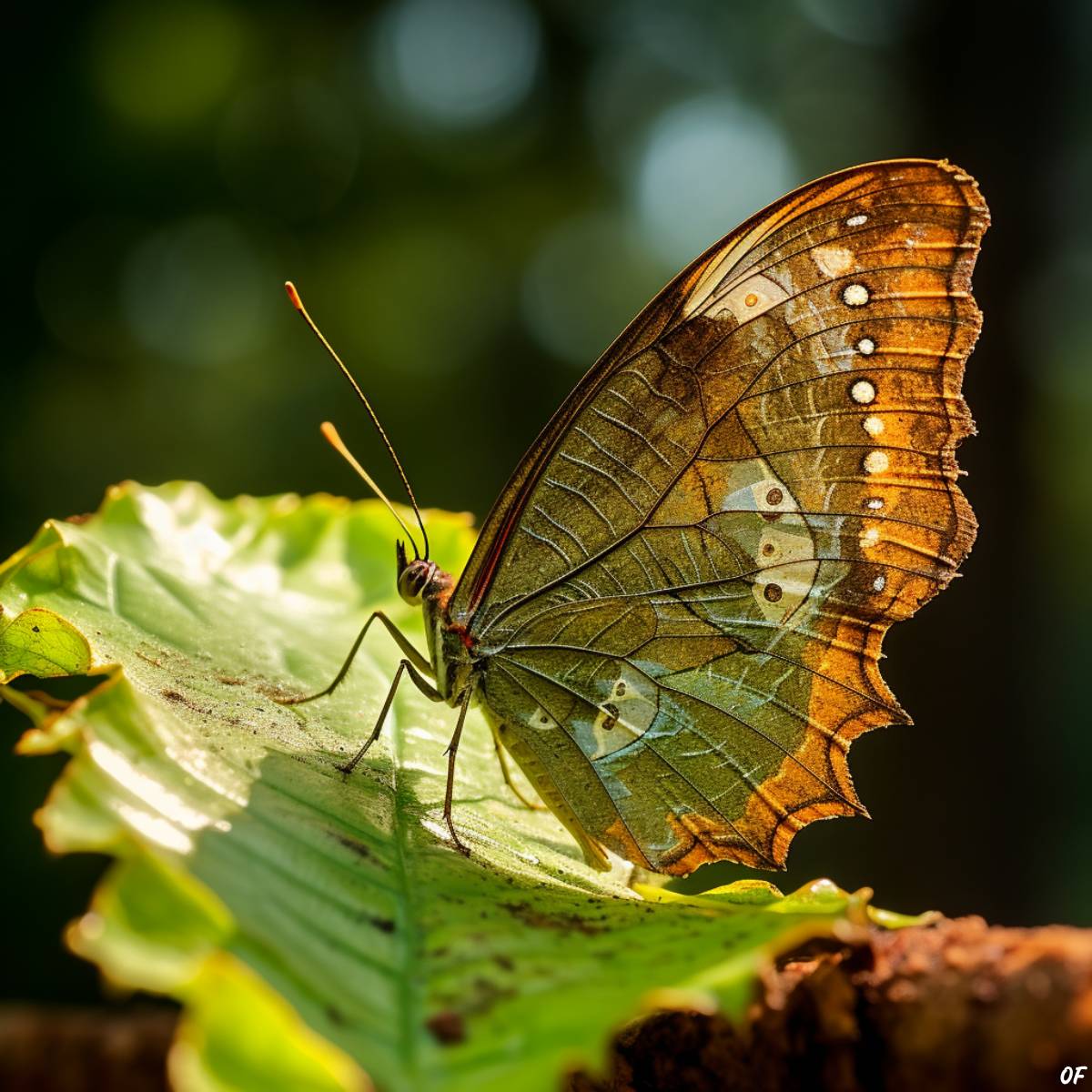Kallima inachus, commonly known as the oakleaf or dead leaf butterfly, is a cryptic species of nymphalid, perfectly crafted by the hands of evolution to resemble its natural environment.
Numerous naturalists over the years have argued over the origin of this species, which is commonly cited as one of the most classical examples of camouflage in the natural world. Some theories state that the evolution of this species occurred over extended periods of time through natural selection, while others argue that the dead leaf butterfly’s mimicry was of spontaneous origin—without various intermediaries.

Amidst the ongoing discourse on species origin, consensus emerges on the captivating phenomenon of “masquerade” mimicry. The dead leaf butterfly astounds with its uncanny resemblance to inert surroundings, its wings mirroring undesirable organic matter, deterring predators with nature’s ingenious camouflage.
Close observation shows that the oakleaf butterfly’s wings mimic the color, texture, and detail of leaf debris perfectly. When the wings are closed, their visible underside is earthy in color and shows veiny aberrations that clearly resemble a dead leaf. The upper side of the wings, however, shows off a kaleidoscope of blues, yellows, and shades of violet, which, complete with eyespots, help deter prey while the butterfly is in flight. This natural wonder does not end there, however: the dead leaf butterfly has two unique forms, depending on the season.
Known as polyphenism, this natural phenomenon arises as a result of different environmental conditions—to which the butterflies adapt in order to maintain appropriate and effective camouflage. The coloration and form are dynamic between wet and dry seasons, displaying noticeable changes in the richness of the tones and the size of the individual butterflies.
The dead leaf butterfly is truly a remarkable example of the intelligence of nature and perfectly displays the wonder of camouflaging creatures and the lengths that nature will go to in order to ensure the evasion of predation and the ultimate survival of a species.


